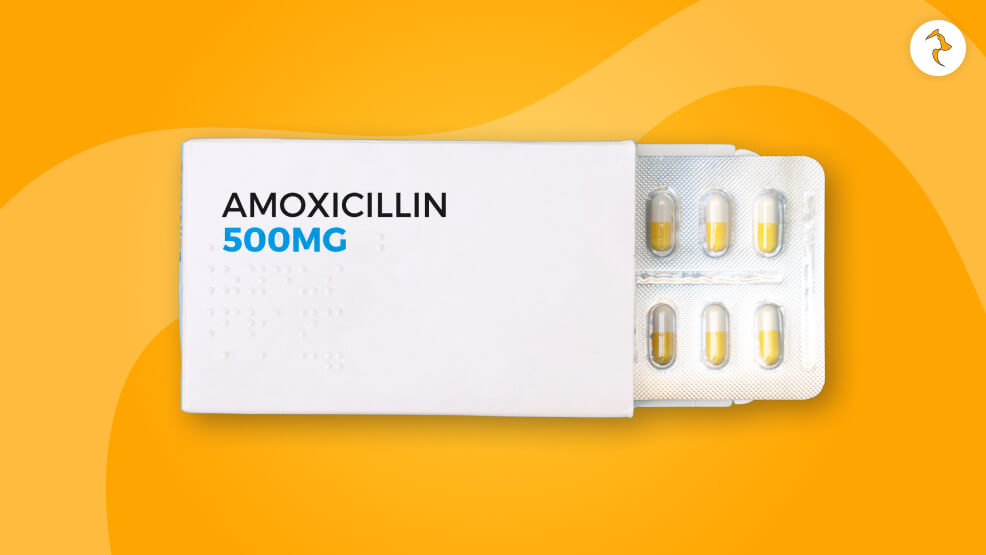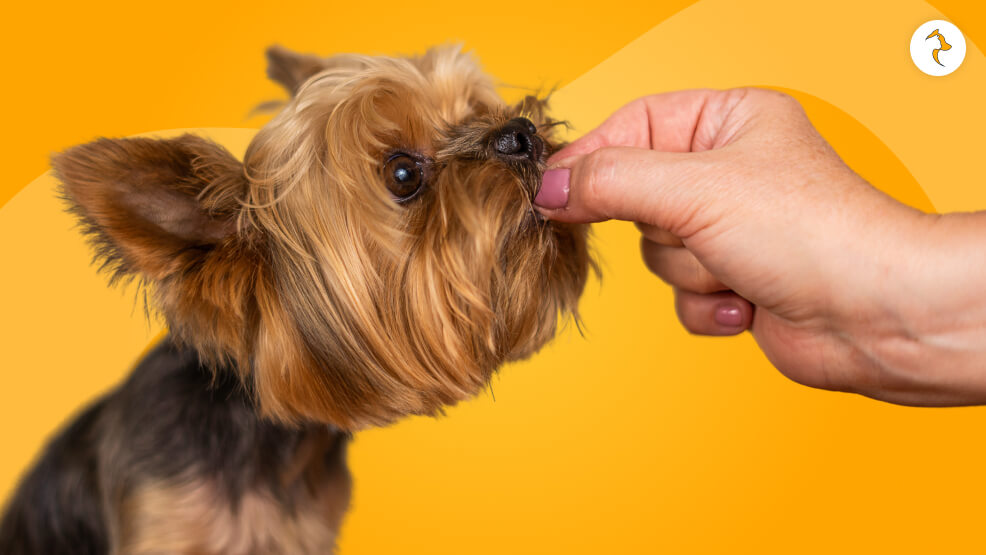Amoxicillin in Dogs: Dosage, Benefits, and Precautions Know


One of the most common antibiotics used in veterinary medicine is amoxicillin. This medicine can treat various bacterial infections that dogs may get exposed to.
Amoxicillin for dogs is quite effective, and most dogs can tolerate it well, but you will have to be careful of the side effects when you are giving them the medicine.
Here’s the rundown on what amoxicillin is, its uses, recommended dosages, and possible side effects when handing it out.
Brief Summary of Amoxicillin and Its Use in Veterinary Medication
Amoxicillin is a product of penicillin. The drug causes inhibition of cell walls of bacterial infection. Due to broad-spectrum action and small side effects.
Most veterinarians prescribe this as the first treatment for numerous infections caused by bacteria. Veterinarians administer this for respiratory, skin, gastrointestinal, and urinary tract infections.
What is Amoxicillin?

It is a beta-lactam antibiotic classified under penicillin; it prevents a range of Gram-positive and Gram-negative bacteria.
Amoxicillin causes the death of bacteria due to the interruption of their production of cell walls. It falls among the widely used veterinary medicinal antibiotics. Most of these are in the form of tablets/capsules that are administered through routes of suspension in water and injectables.
You will see the improvements when you add clavulanic acid to Clavamox. it improves the efficacy against resistant bacterial strains.
Examples of Common Uses of Amoxicillin Include
What is amoxicillin used for in dogs? The following are common diseases treated in dogs with amoxicillin
- Respiratory Infections, including pneumonia or bronchitis, among many others
- Skin and soft tissue infections include abscesses, wounds, or even pyoderma.
- Urinary tract infections UTIs This is the type of bacterium in your urinary or bladder.
- Gastrointestinal Infections Bacterial overgrowth like salmonellosis.
- Tooth Abscess: In the post-surgical tooth infection or periodontic disease.
Dosage and Administration

Here are a few general guidelines and dosage of how to administer Amoxicillin for dogs, which are different than that of humans.
Dosage
It first considers dosage by weight, then by age, and type of infection. It is best to give the oral route after dilution using 5-10 mg/lb BW at intervals of 12 hours. A prescription in some way fluctuates so that someone is lock down strictly in dosing to direct through his vet to him.
Dosing in 500 mg to Dogs
Amoxycillin 500mg for dogs dosage should be given to large dog breeds or when a dog breed is critically infected. The veterinarians should decide the dose to make sure they get exactly the amount they need and not more.
Amoxicillin For Dogs Dosage Chart
If you are wondering how much amoxicillin for dogs is safe, here is a chart that you can follow. However, it is always recommended to consult a vet.
| Dog Weight (Ibs) | Dosage Range (mg) | Frequency |
|---|---|---|
| 10 Pounds | 50-100 mg | Every 12 hours |
| 20 Pounds | 100-200 mg | Every 12 hours |
| 50 Pounds | 250-500 mg | Every 12 hours |
| 100 Pounds | 500-1,000 mg | Every 12 hours |
Administration Methods
You can mix this medicine in their food or give it to them directly. It is better to give them the medicine in liquid form in case of small breeds or dogs that find it difficult to swallow pills.
Your dog must finish the course of treatment even when he thinks he is already better, because this will prevent resistant bacteria from becoming resident.
Possible Adverse Effects
Most dogs will have a mild reaction to amoxicillin. The common amoxicillin side effects are:
- Gastrointestinal Disturbance: diarrhea and vomiting, decreased appetite.
- Hypersensitivity Reactions: swelling or hives/ difficulty breathing. Life-threatening, contact your vet at once
- Superinfections: Overgrowth of resistant, non-susceptible flora and fungi with long-term dosing.
- Report all instances to your vet as these occur.
Side Effects and Interaction Pre-existing condition
Here are a few side effects and interactions with pre-existing conditions that you should be aware of.
- Dogs suffering from renal or hepatic disease should be titrated.
- Amoxicillin should not be given to penicillin-sensitive dogs.
- Drug Interactions: Amoxicillin can interact with other medications, including
- Anticoagulants: There is an increased risk of hemorrhage
- Other Antibiotics: The effect would be minimal if combined with bacteriostatic antibiotics like tetracyclines.
- Do inform your vet that your dog is on medication or supplements.
- Amoxicillin can be obtained OTC Without Prescription.
Never provide amoxicillin without a prescription. Self-medication results in overmedication or failure due to the resistance developed by the bacteria.
Alternatives of Amoxicillin

If the doctor can’t administer amoxicillin to the patient’s situation, so that they will prescribe some other drugs:
- Cephalexin- In case of skin and soft tissue infections.
- Metronidazole– For intestinal infections.
- Doxycycline– In case of tick-borne diseases.
For minor cases, probiotics and immune enhancers are used.
Can Dogs Take Human Amoxicillin?
Human products have additives that are poisonous to dogs. Use only veterinary-specific products.
- Amoxicillin 500mg Dosage for Dogs
- Administer with the guidance of a vet, especially to bigger breed dogs.
- Dosage Table for Amoxicillin in Dogs
- This can be found in the “Dosage and Administration” section.
- Amoxicillin for Dogs: No Vet Prescription
Stores should never sell this medicine without a prescription. Excessive use can pose dangers and contribute to the resistance mechanism of bacteria-fighting antibiotics.
The following are minor reversible side effects caused by amoxicillin: gastrointestinal upset, allergic reaction, and even the secondary development of infections in some instances. In case an allergic reaction is observed, talk to your vet.
Always Consult A Vet Before Giving Them Medicines
Amoxicillin for dogs is one of the major bacterial antibiotics. Amoxicillin is a potent antibiotic that can remove large-scale infection-causing bacteria in a dog’s body.
Only relatively safe to use; so only a vet knows how to use it correctly and the risks involved with it. To take care of your pet in the best possible way, you need to know the benefits, side effects, and precautions as well.
Properly prepare and arm yourself with expert information on treating those antibiotics as one keeps safe, with a furball friend forever staying pink.
FAQ
So, here are a few FAQs on amoxicillin for dogs that other people ask.
The usual dosage is 5-10 mg per pound of body weight, administered every 12 hours. However, you have to consult the dosage with your vet.
Amoxicillin is an FDA-approved antibiotic that is used for dogs to treat susceptible infections. It is considered safe, but it is not without side effects.
Amoxicillin is available in veterinary clinics and animal pharmacies with a prescription. If seeing the vet is impossible, the over-the-counter will do.
It heals the infections caused by bacteria on the skin, respiratory, urinary tract, and gastrointestinal systems, among many others.
Can dogs take amoxicillin for humans? Never give your dog human amoxicillin without consulting your vet.
Moreover, if you have somehow given them the medicine, and notice severe allergic reactions like respiratory issues, facial swelling or collapse, seek immediate care.
Wrapping Up!
This is one of the major bacterial antibiotics. Amoxicillin is one of the very potent antibiotic medications meant to eradicate large-scale infections-causing bacteria in the dogs’ bodies.
Only relatively safe to use; so only a vet knows how to use it correctly and the risks involved with it. Know the benefits, side effects, and precautions to be properly guided on the best thing for your lovely pet.
Properly prepare and arm yourself with expert information on treating those antibiotics as one keeps safe, with a furball friend forever staying pink.








Leave A Comment